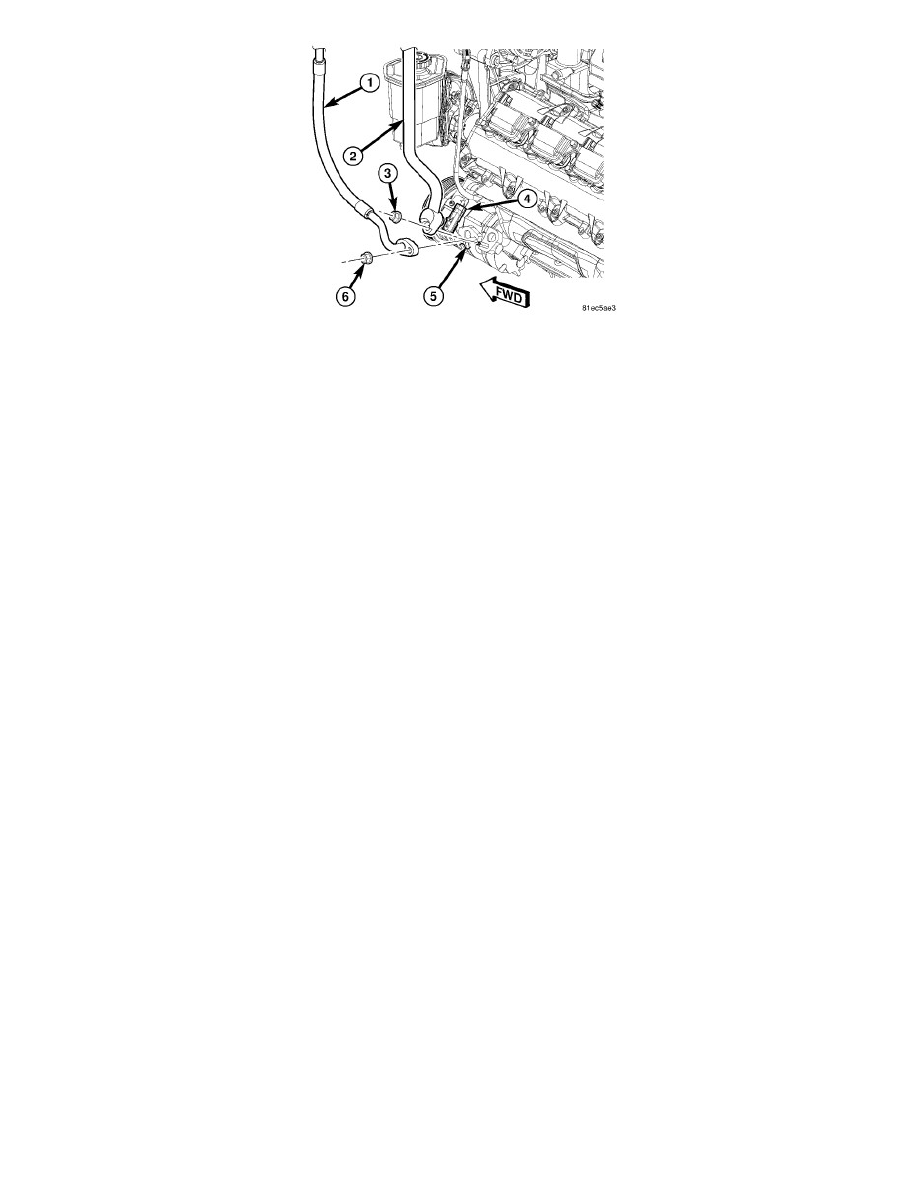Durango 4WD V8-5.7L Hybrid (2009)

NOTE: 5.7L gas only engine shown. 5.7L HEV engine similar.
10. If required, raise and support the vehicle.
11. Remove the nut (6) that secures the A/C discharge line (1) to the A/C compressor (5).
CAUTION: On HEV models, a small quantity of refrigerant oil may be lost from the A/C compressor when the A/C discharge line is
disconnected. Prior to removing the A/C discharge line from the A/C compressor, it very important to place a small clean
container below the discharge line fitting to capture any refrigerant oil that may leak from the compressor discharge port. Always
measure the amount of refrigerant oil lost and replace with the same amount of fresh clean ND-11 POE refrigerant oil prior to
recharging the A/C system. Never use PAG oil in an HEV model or operate the A/C system with an incorrect amount of oil in the
system. Failure to follow this caution may result in serious damage to the HEV A/C system.
12. Disconnect the A/C discharge line from the A/C compressor and remove and discard the O-ring seal and gasket.
13. Install plugs in, or tape over, the opened refrigerant line fitting and the compressor port.
14. Remove the A/C discharge line from the engine compartment.
A/C Discharge Line - Installation
5.7L ENGINES
CAUTION: Be certain to adjust the refrigerant oil level when servicing the A/C refrigerant system See: Heating and Air
Conditioning/Specifications/Capacity Specifications/Refrigerant Oil Capacity . Failure to properly adjust the refrigerant oil level will
prevent the A/C system from operating as designed and can cause serious A/C compressor damage.
CAUTION: Always use ND-11 Polyester (POE) oil from Mopar(R) in Hybrid Electric Vehicle (HEV) models. Never use Polyalkylene Glycol
(PAG) oil in an HEV model. See Refrigerant Oil for more information.
CAUTION: Polyalkylene Glycol (PAG) oil can contaminate the refrigerant system of a Hybrid Electric Vehicle (HEV) and lead to A/C system
damage and failure. If the refrigerant recovery/recycling and charging equipment was last used on a non-HEV model, flush the
hoses of the equipment with a solvent approved by the equipment manufacturer before using the equipment on an HEV model, or
use refrigerant recovery/recycling and charging equipment designated only for HEV models by your service facility. See the
operating instructions supplied by the equipment manufacturer for proper use and care of the refrigerant recovery/recycling and
charging equipment.
NOTE: When replacing multiple A/C system components, refer to the Refrigerant Oil Capacities chart to determine how much oil should be
added to the refrigerant systemSee: Heating and Air Conditioning/Specifications/Capacity Specifications/Refrigerant Oil Capacity .
NOTE: Replacement of the refrigerant line O-ring seals and gaskets is required anytime a refrigerant line is disconnected. Failure to replace
the rubber O-ring seals and metal gaskets could result in a refrigerant system leak.
